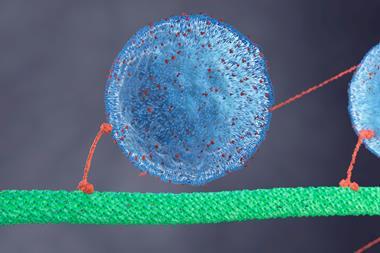From Jeremy Tomkinson, Adrian Higson and Geraint Evans
We found the article ’Flawed policies encourage damaging biofuels’ (Chemistry World, February 2008, p6) to be disappointingly unbalanced. The provocative titles used for the piece do little to stimulate a reasoned and scientific debate in this immensely complex subject. The RSC has a duty to provide balanced and accurate information, rather than emotive headlines.
The article initially gives the impression that sustainability issues had not been considered prior to the Royal Society report, Sustainable Biofuels: prospects and challenges. However, sustainability has always been important to the development of biofuels in the UK, and the industry has been working with government to develop sustainability criteria for some time. Only towards the end of the article do we discover that the Royal Society actually applauded the UK’s development of carbon and sustainability criteria within the Renewable Transport Fuel Obligation (RTFO).
The adoption of biofuels certainly has potential social, economic, and environmental implications. However, these must be placed into context rather than, for example, linking deforestation and raising food prices with biofuel production; both of which owe more to changing and increasing food consumption and negative environmental factors.
Many unknowns lie in the development of biofuels but as the Royal Society states, ’biofuels have the potential to be a useful element of the overall approach to the issues of climate change and energy supply.’ Their analysis suggests that there is considerable potential to improve the performance of biofuels; chemists have a crucial role to play in this.
Appropriate policies are required to ensure we develop towards increasingly sustainable fuels with lower greenhouse gas emissions. The RSC can contribute significantly to policy development - it must therefore develop its views through reasoned and scientifically grounded debate rather than emotional hypothesis. Otherwise, we run the danger of killing a potentially good thing before it has been given chance to grow.
J Tomkinson CChem MRSC, CEO; A Higson CChem MRSC, Technology Transfer Manager; G Evans CEng MIChemE, Technology Transfer Manager
National Non-Food Crops Centre, York, UK
Ed: We accurately reported the content and context of the Royal Society report, whose press release opened with the words, ’Biofuels risk failing to deliver significant reductions in greenhouse gas emissions from transport and could even be environmentally damaging unless the Government puts the right policies in place’. The content of Chemistry Worlddoes not represent RSC policy. You can read more on the ’biofuel backlash’ in next month’s ’Comment’ piece.
From Brian Innes
Brian Malpass’s ’Last Retort’ (Chemistry World, February 2008, p84), with its mention of the chemist Chaim Weizmann, reminds me of a theory I have long cherished, but not seen publicised.
Around 1912, Weizmann isolated a strain of Clostridium acetobutylicum that would produce by fermentation of starch not only butanol, but acetone and ethanol. During the first world war, acetone was very important in the production of war materials. Apart from UK production, two distilleries were established in Canada to produce acetone from maize starch, and in 1917 the Allied War Board also operated the Weizmann process at two distilleries in the US.
At that time, the movement for the establishment of the state of Israel was largely centred in America. In the UK, the principal enthusiast was the then Lord Rothschild. He was primarily a zoologist, Fellow of the Royal Society, and a scientific adviser to the British government. Is it not possible that the Balfour Declaration of 1917 [which proposed how to partition the Ottoman Empire and included plans for a ’national home for the Jewish people’ - Ed.] was a ’trade-off’ for the Weizmann process, to secure the wholehearted co-operation of America in the war in Europe? It is, at the very least, significant that Weizmann subsequently became the first President of Israel.
B Innes MRSC
Montgaillard, France
From Peter Newsome
I found Philip Ball’s article on art inspired by science (Chemistry World, March 2008, p42) particularly interesting, since I am both a PhD biochemist and a professional sculptor. I began my sculpting practice 15 years ago after spending the first half of my career in pharmaceutical research.
I have always considered synthetic chemistry to be sculpture on a molecular scale but the beauty of molecular structures is rarely translated into sculpture that is as successful as that of Julian Voss-Andreae.
The disciplines of art and science are not easily combined but your article on Voss-Andreae’s sculptures has inspired me to look at ways in which I may not only use science as a tool in the creation of sculpture but also to think of new ways to use sculpture to express scientific ideas. Thank you for an inspiring and informative article.
P Newsome CChem, FRSC
London, UK
From Malcolm Brownsword
David Stevenson’s letter (Chemistry World, March 2008, p45) regarding collaboration between chemists and chemical engineers reminded me of the later of my 39 years as a chemist in the nuclear industry, when I worked alongside chemical engineers on various waste management research projects. In those days it was popularly thought that a chemical engineer was someone who did for profit what chemists do for fun (see also ’prostitution’). Incidentally, you are probably a chemical engineer if you are reading this page on a Saturday night!
M Brownsword CChem MRSC
West Hagbourne, UK
From Stephan Bird
Aileen Allsop and James Graham paint a gloomy picture for UK chemistry (Chemistry World, March 2008, p87), but I hope that the situation reported is exaggerated slightly. Could the fact that AstraZeneca India gets more enquiries be a measure of the openness of the application process on the subcontinent? I have applied for at least 20 jobs over the last year in the UK, and of these, the majority of companies have replied along the lines of an anonymous ’Thank you for your application, if you don’t hear from us within a month, consider your application to not be successful.’
Even replying to those that do not dismiss applications this lightly is fraught with danger, because trying to get anywhere on a corporate switchboard without a name is like searching for a needle in a haystack.
This is not to say that on some occasions, I have not had useful feedback; but letters that read ’We have identified candidates who more closely match our needs’ are not much use when the only need quoted in the advertisement is a degree in chemistry.
This change in emphasis from individualised letters to generic paragraphs seems to have gone hand in hand with the rise of the internet, not just as a job-searching medium, but also as a mainstream communications method. It is just as easy to send off 100 impersonal rejection letters as it is to send one. How can this be changed?
In the meantime, if anyone is looking for an organic chemist, with around 3 years post-degree experience .
S Bird MChem AMRSC
Caernarfon, North Wales
From John Mullin
The risk of burying important information by publishing in an inappropriate journal (Chemistry World, March 2008, p95) brings to mind the decades-long loss to the chemical world of the fundamentals of phase equilibria.
These are neatly encapsulated by what is now known as the Phase Rule, linking the numbers of compounds, phases and degrees of freedom.
The loss occurred after the Yale Professor of mathematical physics, Josiah Willard Gibbs, sent his rigorous thermodynamic proof of the rule (which now bears his name) to the undoubtedly distinguished but probably not widely read Transactions of the Connecticut Academy in 1876.
J Mullin CChem FRSC
Uxbridge, UK
From Kay Bagon
Had the author of ’The Last Retort’ (Chemistry World, March 2008, p96), sampled some of the hallucinogen peyote that he referred to just prior to writing his article, or was it intended for publication a month later - on 1 April?
K Bagon
Radlett, UK












No comments yet